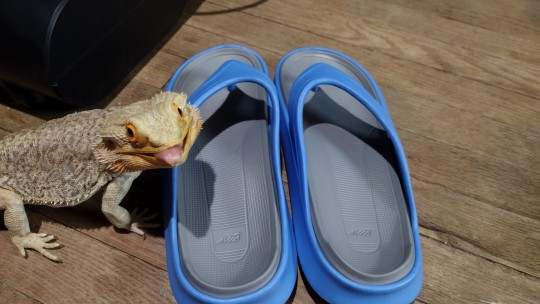#reptile
Text






Breaking news: giant reptilian monsters spotted climbing all over Chicago landmarks!
This month's CHS Junior Herpers (a reptile club for kids that I run) was all about movie monsters. We talked about reptiles in the film industry and then I showed the kids how to use miniature sets and low angle photography to make their little friends look like giants. The ball python had a little trouble, but his owner was super pleased. CC the crested gecko was easily our best actor- he loved our bridge sets. The kids had a blast casting their creatures in a hypothetical movie.
290 notes
·
View notes
Text
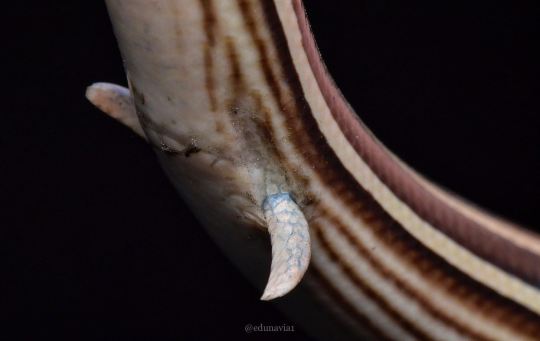
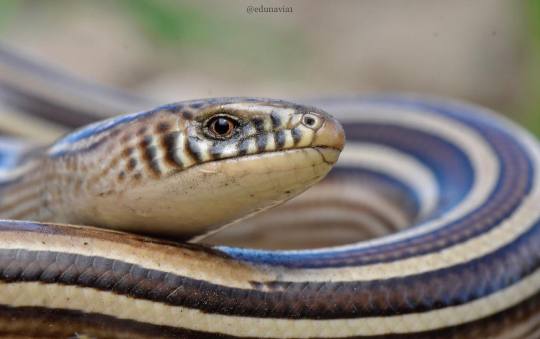
Capa Capa Glass Lizard (Ophiodes intermedius), family Diploglossidae, Bolivia
The Glass Lizards in the genus Ophisaurus, which are in the family Anguidae, are completely limbless (legless lizards).
This genus, Ophiodes, in the Galliwasp family, Diploglossidae, has small flap-like vestigial hind limbs.
photographs by Eduardo Navia
#legless lizard#glass lizard#ophiodes#diploglossidae#lizard#reptile#herpetology#south america#animals#nature
366 notes
·
View notes
Text
#reptile#cosplay girls#ky.txt#oceanbeach#a24#mambomarie#reflection#will ferrell#alain delon#videoscratch
344 notes
·
View notes
Text


Atlas being a pancake 🥞
Did you know many lizards will inflate and flatten themselves to absorb more heat and UV while basking? They will also do it after feeding in order to help with digestion and is commonly referred to as "pancaking"! 🏜
☆---------------☆
Name: Atlas
Age: 5 months
Sex: Male
Species: Ackie Monitor (Varanus acanthurus)
☆---------------☆
#ackie monitor#atlas the ackie#lizard#monitor lizard#reptile#reptiles#exotic pets#lizards#spiny tailed monitor
155 notes
·
View notes
Text




Results from the #paleostream!
Ichthyotitan, Vasuki, Dynamosuchus and Quasicaecilia.
#paleoart#sciart#paleostream#palaeoblr#cretaceous#dinosaur#reptile#ichthyosaur#snake#giant snake#archosaur
186 notes
·
View notes
Text
108 notes
·
View notes
Text

Sblorby
87 notes
·
View notes
Text
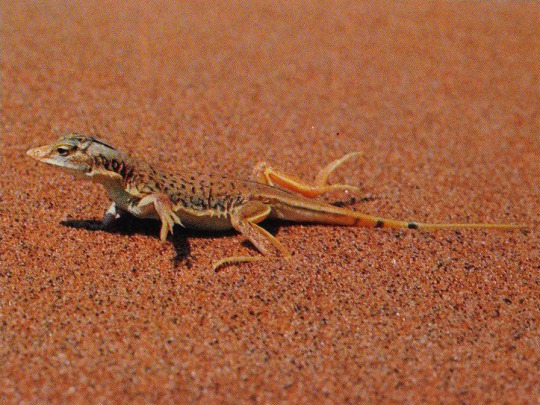
Fringe-toed lizard
By: Rod Borland
From: Wildlife of the Deserts
1980
54 notes
·
View notes
Text
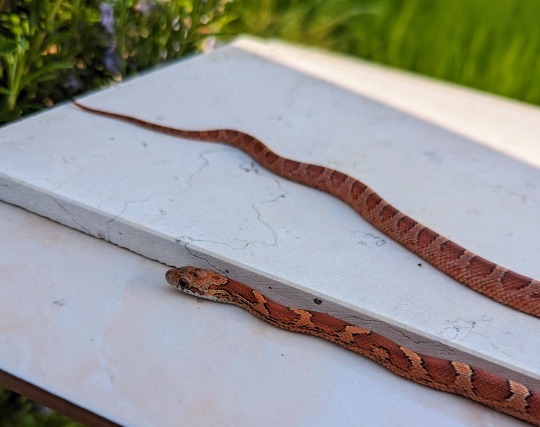
#snake#snakes#reptile#reptiles#reptiblr#corn snake#corn snakes#corn snake morphs#baby snake#ma23#ma23f1
29 notes
·
View notes
Text


Reason number one you should attend Chicago Herpetological Society meetings: Nakajima WILL sit on your shoulders or lap or chest and WILL make it known how much fun she thinks people are. Also she might tell your kids secrets.
I still can't believe how amazing she is with kids. This is not a domesticated animal! This isn't a dog with a drive to work with people! This is a lizard who simply loves human interaction, and I am so grateful she ended up with me. I miss Kaiju every day but she makes the absence tolerable, and I'm so glad she and I have an avenue through CHS to share her with the world.
397 notes
·
View notes
Note
Could I see Jackson's Chameleon, please? It's one of my favorite animals
Also, out of curiosity, what's your stance on posting pictures of fossils of extinct creatures?
Yes, absolutely. I love them as well!
Well, my mission here is to teach people the biodiversity of extant animals, with a concentration on herps and birds. I love prehistoric animals, but I don't have an academic or professional background with them. I may start a paleo blog sometime later this year though. I'll let you all know.

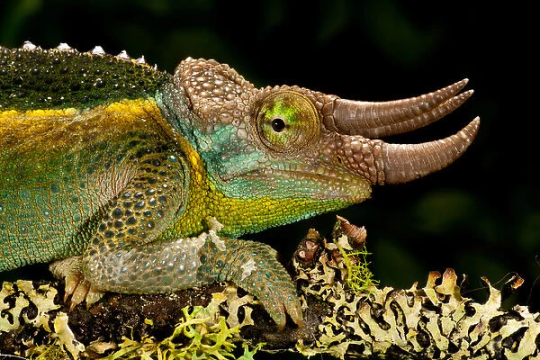

Jackson’s Chameleon (Trioceros jacksonii), males pictured, family Chamaeleonidae, found in the mountain forests of Kenya and Tanzania
Photographs: Underground Reptiles, David Northcott, & Galapagos Pets
297 notes
·
View notes
Text
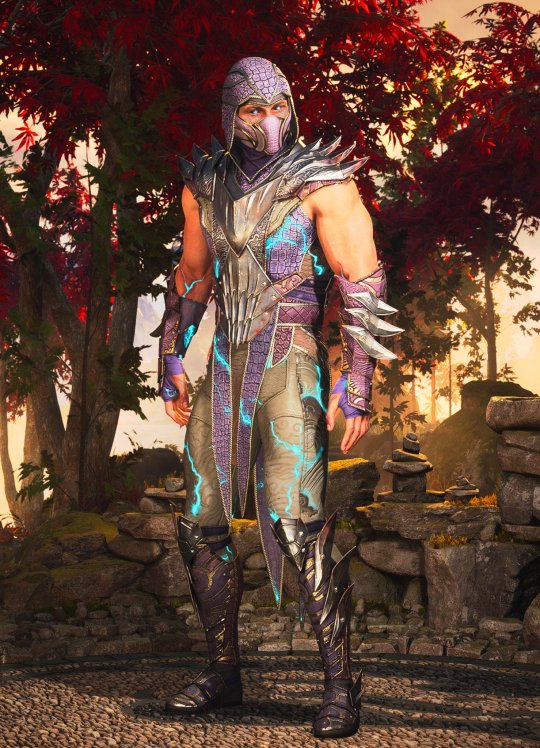

why am i just realizing now that the raiden skins took syzoths tattoos away
#mortal kombat#reptile#syzoth#now im curious if this happened during the other seasons too#i will have to go back and look now
21 notes
·
View notes
Text
Wet Beast Wednesday: spiny softshell turtle
It may be neither Flat Fuck Friday nor Turtle Tuesday, but because this is my series and I can do what I want, I'm talking about a very flat turtle. The spiny softshell turtle (Apalone spinifera) is the most widely distributed and possibly the most common softshell turtle in North America. Its range covers most of the Eastern half of the USA and stretched into Canada and Mexico. There are 6 subspecies separated by geography and hybridization can happen in places where their ranges cross. Hybridization has also been known to happen with the Florida softshell (Apalone ferox). The subspecies are the northern (A. s. spinifera), gulf coast (A. s. aspera), Texas (A. s. emoryi), pallid (A. s. pallida), Guadalupe (A. s. guadalupensis), and black (A. s. atra) spiny softshells.

(Image: a spiny softshell turtle seen from above and to the side. It is a turtle with a wide, flat shell. Its head and one foot are visible. The head is skinny and has an elongated nose. The foot is wide and flat, with webbed toes. The turtle is an olive green with black dots on the skin, yellow stripes on the face, and dark spots on the shell. End ID)
The thing that makes a softshell a softshell is the lack of keratinized scutes on their shells. This makes the shells smooth and leathery. The center of the shell has a layer of solid bone user it, but this does not extend to the edges of the shell, making it less rigid. Softshells are the fragile speedsters of the turtle world. Their shells are a lot lighter and often more streamlined, allowing for faster movement both on land and in water, but they provide less defense. Spiny softshells have spiny projections along the front edge of the carapace (upper shell), with males having more than females. They are some of the largest North American freshwater turtles. Females can reach a carapace length of 54 cm (21 in) and 11 kg (25 lbs) while the smaller males max out at about 25 cm (10 in).
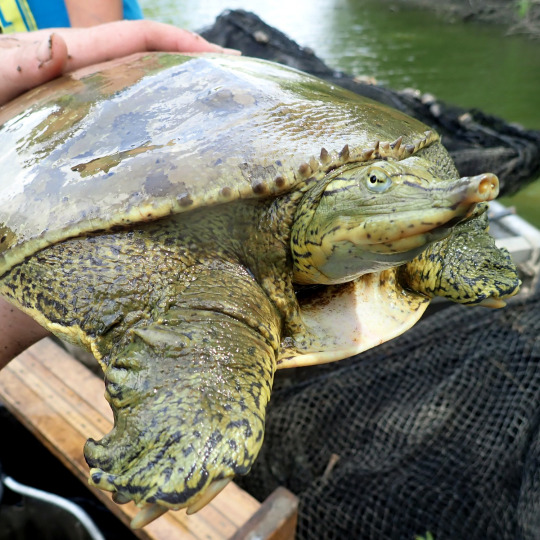
(Image: a spiny softshell being held by a person, seen from the front. The leading edge of the carapace is visible, showing off the small spines. End ID)
Spiny softshells have wide, flat, paddle-like feet with three claws and an elongated nose that acts like a snorkel. The turtles are born a bright olive color with striped faces and dark spots on the shell. Males keep their juvenile coloration for their entire lives while females grow darker ad lose many of their markings. It can be very difficult to tell females of different subspecies apart, while males and juveniles can be distinguished by their markings. Smooth skin and highly vascularized membranes in the cloaca, mouth, and throat allow the turtles to breathe by diffusing dissolved oxygen from the water into their blood.
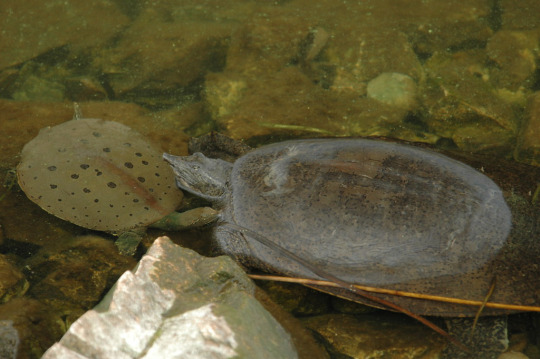
(Image: a male and female spiny softshell facing each other. The male is less than half the size of the female and has an olive colored shell and skin, with dark spots on the shell. The female is a uniform muddy brown color. End ID)
Spiny softshells are generalists able to live in a wide range of habitats. They prefer streams, rivers, and ponds with muddy or sandy bottoms and high visibility, but can live in most freshwater habitats. Softshells are diurnal, spending their days basking and feeding. Being turtles, they are ectothermic, meaning their body temperature matches the surrounding temperature. To warm themselves up, the turtles bask in the sunlight. They can often be found resting on exposed rocks, logs, sandbars, or shorelines. While not particularly social animals, the turtles will bask in groups. When threatened, softshells will attempt to swim away and/or bury themselves. In the right sediment, a softshell can bury itself in under a second. Because their shells are less rigid, softshells have to actively defend themselves when cornered and will bite and scratch. People have to be careful when handling them. They brumate (that's hibernation for reptiles) during winter. While brumating, they bury themselves underwater and slow their metabolism and oxygen requirements. In this state they can fully sustain themselves on oxygen absorbed through their skin or special membranes.
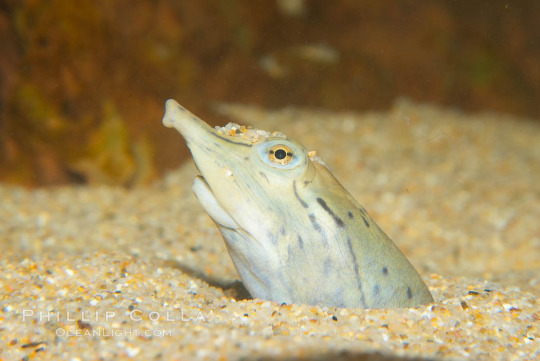
(Image: a spiny softshell turtle buried in its hunting strategy. Only the head is visible above the sand. End ID)
They are primarily carnivores and will eat anything that can fit in their mouths. Aquatic insects, crayfish, worms, amphibians, mussels, snails, fish, and more are on their plate. While capable of fast swimming, they are not pursuit predators. They employ two primary hunting strategies. The first is to bury themselves in the sediment and wait for prey to come by. The second is digging in the sediment to find worms and other animals. Fish have been known to follow digging turtles around to feed on animals unearthed by them.

(Image: a spiny softshell in captivity. It is swimming at the surface of the water in a tank, amongst artificial leaves. End ID)
Spiny softshells mate in spring. Males attempt to woo females by swimming over to them and bumping heads together. The male then sits on top of the female to mate. Unlike most species of turtles, the males do not grab onto the female's shells during mating. Eggs are laid between summer and early fall and will hatch next spring. The female will dig a nest in sandy or gravelly banks and bury the eggs once they have been laid. She provides no further care. Females will typically mate multiple times each year, with each mating having a different nest. The juveniles take 8 to 10 years to reach sexual maturity and they can live up to 50 years in the wild. Many turtles determine sex by the temperature the eggs are incubated in. This is not the case with spiny softshells, who have genetics based sex determination.

(Image: a group of 5 juveniles. The photo focuses on two who are sitting next to each other. One has its front right leg on the shell of the other. They have similar coloration to an adult male. End ID)
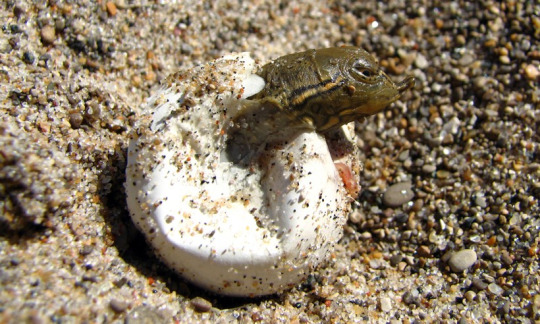
(Image: a newborn emerging from its egg. The egg is round and white, looking like a ping-pong ball. Only the head of the turtle has emerged. End ID)
Most subspecies of spiny softshell are classified as least concern or near threatened by the IUCN, meaning they are not in danger of extinction. The exception is the black spiny softshell, also known as the Cuatro Ciénegas softshell, which is critically endangered. The primary threats to the turtles is habitat loss due to human activity. Adults have no natural predators outside of the Florida and adjacent state populations, which are prey to alligators. Juveniles are eaten by a variety of animals including fish, snakes, raccoons, and herons. People will also eat the adults. Because it can take a whole decade for juveniles to become reproductive, losses in population take a long time to replace. They have been introduced to areas outside of their native range, most notably the western USA. Most of these introductions are due to people releasing pet turtles into the wild.
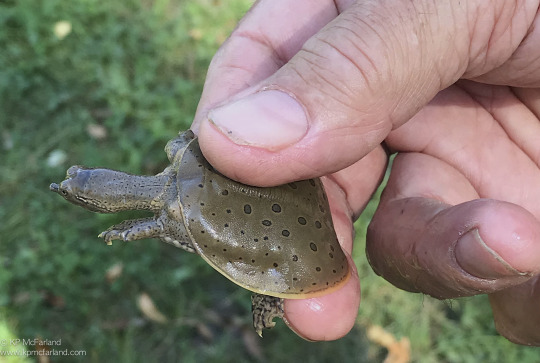
(Image: someone holding a juvenile. The shell is 2-3 times the size of the human's thumb. End ID)
#i typoed it as softhsell more times than I care to admit#wet beast wednesday#turtle#turtles#softshell turtle#soft shell turtle#spiny softshell turtle#reptile#biology#zoology#ecology#animal facts#freshwater ecology#aquatic biology#informative#educational#image described#turtle power#herpetology
31 notes
·
View notes
Text




Mortal Kombat 1 (2023)
#mortal kombat#mkedit#mortalkombatedit#mortalkombatsource#kitana#reptile#syzoth#johnny cage#dailygaming#gamingedit#videogameedit#gamingnetwork#my edits
18 notes
·
View notes
Text

18K notes
·
View notes

